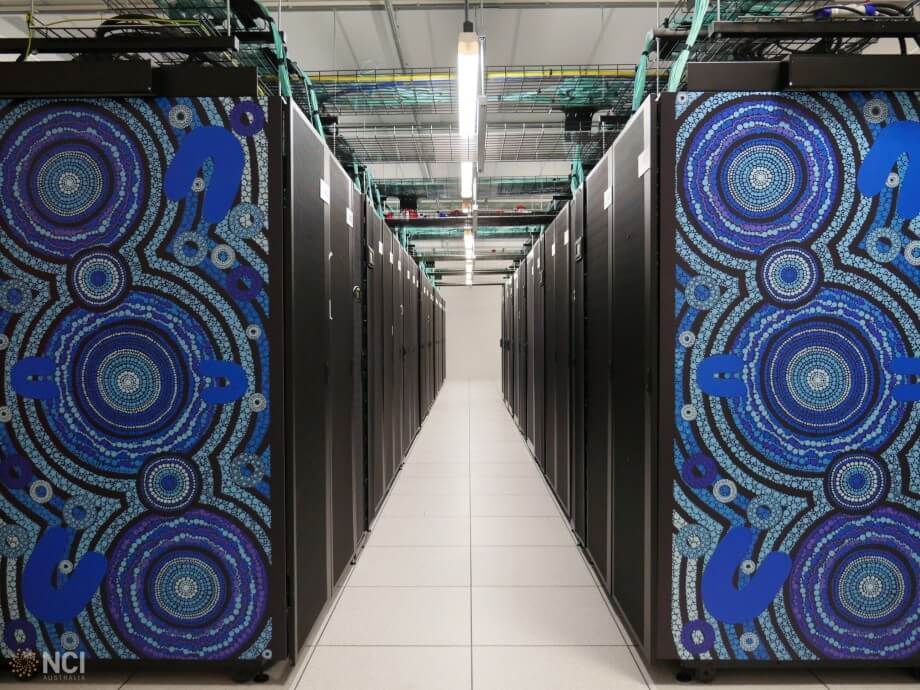
With help from the Astronomy Supercomputer Time Allocation Committee (ASTAC) Large Program allocation, a group of researchers from Australia and around the world have managed to optimise the search for the yet-undiscovered material known as ‘dark matter’.
Since the late 19th century, astrophysicists have believed there is more to the matter we can observe in the universe than meets the eye. It wasn’t until the late 1970s, however, that observations of the rotational speed of the Andromeda galaxy clearly suggested an invisible type of matter was making the outer edge of the galaxy move faster than it should be – if Newton’s laws of motion were to be obeyed. Scientists could not see this matter with any type of conventional telescope, be it optical, radio, infrared, x-ray, etc., as it did not appear to interact with light. While an invisible matter of this kind had been hypothesised in preceding decades, this was the first gravitational detection of ‘dark matter’ – now known to make up approximately 85 percent of matter in the universe.
But what is this mysterious substance made up of? Researchers still do not know, however one of the more popular hypotheses suggests that dark matter is composed of a yet-to-be-discovered elementary particle or group of particles. One of the most heavily researched candidates are the Weakly Interacting Massive Particles, known affectionately as “WIMPs”. These yet-undetected hypothetical particles have been the subject of many experiments, computer models, simulations, and published research papers, though no direct detections have yet been made.
Making use of an ASTAC allocation of time on the Gadi supercomputer, Professor Csaba Balazs from Monash University collaborated with an international group of researchers to try and narrow the search parameters for future dark matter hunters. In their recent paper, Professor Balazs and his group (the GAMBIT Collaboration) managed to bypass one of the biggest problems in the field – analysis of the sheer number of different WIMP models – by relying on a framework that doesn’t use these models, but instead employs an alternative systematic approach called (dark matter) effective field theory. This theory involves the description of interactions between elementary particles we already know of (in this case quarks and gluons) and dark matter candidate particles – independent of any models.
Using the effective field theory framework, the researchers tightened up the restrictions surrounding experiments into dark matter particles, ensuring that only the most reliable predictions were used. The group used state-of-the-art statistical methods, tasking the Gadi supercomputer (along with two other supercomputers) to bring all of these key components together to form a precise description of where the hunt for dark matter particles (WIMPs) should be focused. This information is incredibly valuable to the ongoing search for dark matter, as it can be used as a tool to optimise currently and future dark matter experiments and detectors.
Without the ASTAC allocation we could not have performed such complex and exciting calculations in a record time.
For their research, the GAMBIT Collaboration were awarded three million service units (MSU) on the Gadi supercomputer by ASTAC, a committee formed by Astronomy Australia Limited (AAL). Gadi is based at the National Computational Infrastructure (NCI), which is governed by the Australian National University (ANU). The ASTAC process of issuing calls for proposals, reviewing and issuing allocations is managed by Astronomy Data and Computing Services (ADACS).
ADACS provides astronomy-focused training, support and expertise to allow astronomers to maximise the scientific return from data and computing infrastructure. ADACS is funded under the National Collaborative Research Infrastructure Strategy (NCRIS) Program via AAL and operates out of two nodes, one at Swinburne University of Technology, and the other at Curtin University. For more information, please contact Swinburne node leader, Professor Jarrod Hurley.
For more information on ASTAC and AAL’s Data and Computing program, please contact AAL’s Director of eResearch, Dr Robert Shen.
